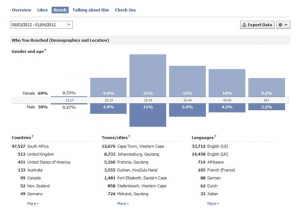5 Steps to Make Your Social Media Content Shareable
Getting your social media audience to share your content should be one of the top goals of any social media campaign. The problem is, you can’t just post anything and expect it to be shared. Followers of your social media channels share and actively like content for many different reasons. Here are a few steps you can take to make this happen:
1. Create Quality Content
The quality of your content is critical when it comes to your audience choosing to share it or not. Be original and try to present your audience with something they haven’t seen before. It doesn’t have to be brand new, but it should have your own unique spin. Did you ever think the Normcore fashion movement would relate to content marketing?
Make sure you present relevant topics, use proper grammar, offer accurate information, etc. Stay consistent in the type of content that you post, so that your loyal readers will keep coming back for more and will want to share what they read with their friends.

2. Create Interesting Content
Really consider your followers and why they might find your content appealing. If you don’t understand who your audience is, you won’t be able to craft content that will appeal to them. Take advantage of your ability to frame your shared content. If you are sharing a blog, with the link, share highlights relevant to the audience whom you are targeting. The description of your post on social media should be short and interesting. It should be designed with the thought in mind that you need to pull the reader’s attention in just a few words, or it’s likely they will move on. Be clever and write something that will entice them to click.

3. Audience Engagement
Once you have your followers interested, get them to engage. This will distinguish average content from content that gets shared. When people share content, they are participating in an exchange of your ideas. So help start the discussion. Ask questions. Answer questions. Comment. Most importantly, engage in the content yourself. It’s important to have a call-to-action at the end of the post.
A simple “read more” or “tell us what you think” can go a long way. And when your audience does engage, make sure you engage them back. Don’t let comments go unanswered. Respond with something to keep the conversation going and maybe consider linking them to another page on your website to direct them to more content that might be relevant to their needs.
4. Know Your Audience
It’s important to craft your message to appeal to the audience you are trying to reach. To do this, you can create buyer personas that effectively offer insight into who your audience is and what they want. You don’t have to do this formally, just maybe hold a meeting with some of your team and get feedback on who your social media audience is and what they are seeking. If you want to get more detailed insight, try sending out a survey asking what types of content they want to see. Look at the insights provided by the social media channel in question. Facebook, for one, provides really great insight into demographic information, user habits, etc. If you don’t know your audience, you’ll have a difficult time posting content that gets shared.

5. Make Your Social Media Content Easily Accessible
Almost as obvious as having good social media content, making sure that your content is readily available and easily accessed is vital to the likelihood of your content being shared. Social media can make this easier for you, but not all platforms are created equal. Sometimes sharing content can be more complicated than it is worth. Lighten the load for your viewers with quick links and content that can be embedded. The easier your content is to share, the more likely it is to be shared.
Make sure you share your content across multiple channels. It’s likely that you will have different followers on different channels. Don’t force them all to visit your Facebook page. What if there is a potential client or customer that only uses Twitter, but you post the content relevant to this person only on Facebook? Looks like you lost out on their business.
These are just a few tips to get you started. In order to be truly successful, you will have to be patience and dig deeper. Develop a strong content marketing strategy and set measurements in place to ensure that your approach is working. We’d love to hear any other suggestions that you have.
Taylor Crouch – Content Writer



